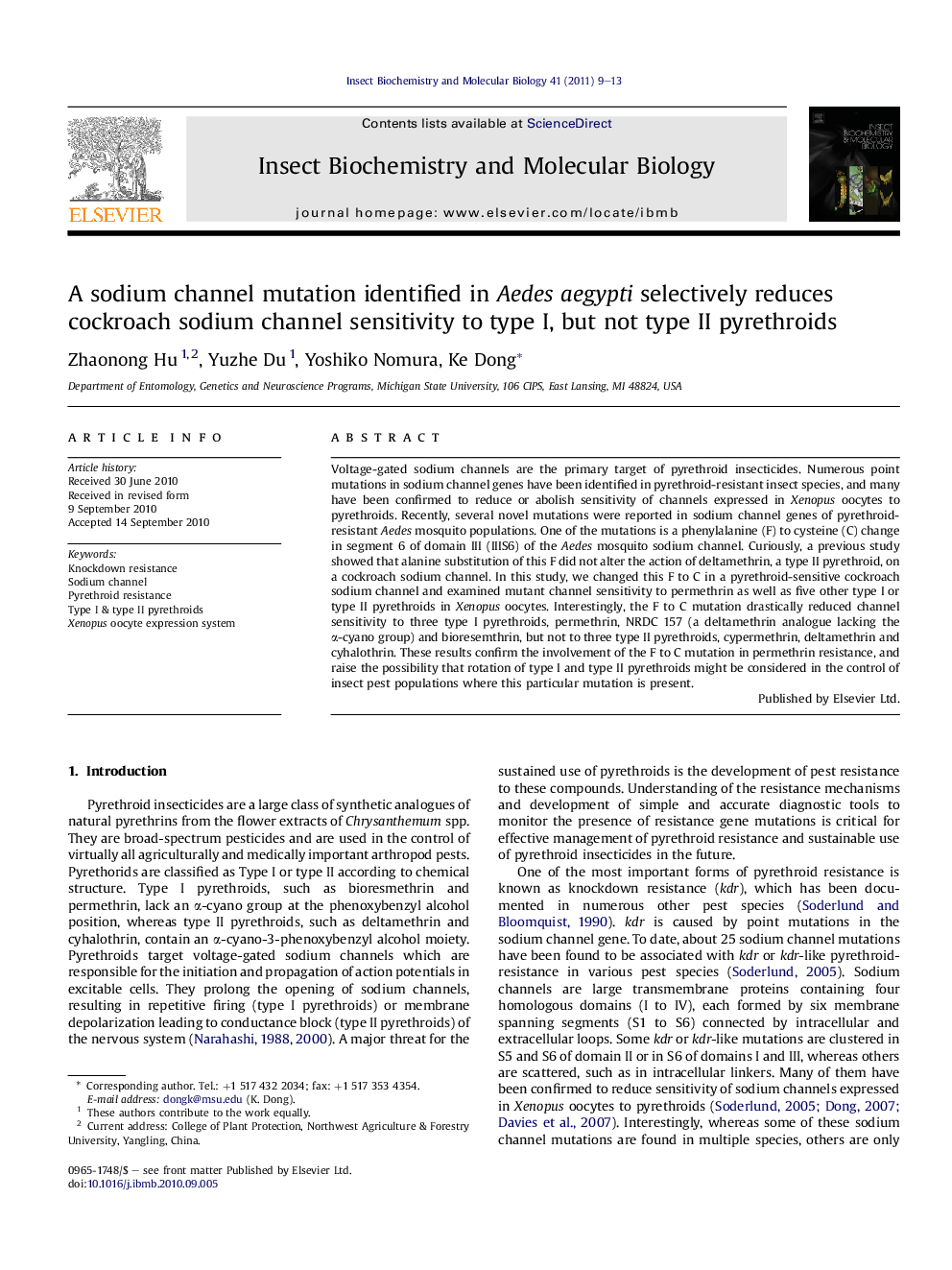| Article ID | Journal | Published Year | Pages | File Type |
|---|---|---|---|---|
| 1982442 | Insect Biochemistry and Molecular Biology | 2011 | 5 Pages |
Voltage-gated sodium channels are the primary target of pyrethroid insecticides. Numerous point mutations in sodium channel genes have been identified in pyrethroid-resistant insect species, and many have been confirmed to reduce or abolish sensitivity of channels expressed in Xenopus oocytes to pyrethroids. Recently, several novel mutations were reported in sodium channel genes of pyrethroid-resistant Aedes mosquito populations. One of the mutations is a phenylalanine (F) to cysteine (C) change in segment 6 of domain III (IIIS6) of the Aedes mosquito sodium channel. Curiously, a previous study showed that alanine substitution of this F did not alter the action of deltamethrin, a type II pyrethroid, on a cockroach sodium channel. In this study, we changed this F to C in a pyrethroid-sensitive cockroach sodium channel and examined mutant channel sensitivity to permethrin as well as five other type I or type II pyrethroids in Xenopus oocytes. Interestingly, the F to C mutation drastically reduced channel sensitivity to three type I pyrethroids, permethrin, NRDC 157 (a deltamethrin analogue lacking the α-cyano group) and bioresemthrin, but not to three type II pyrethroids, cypermethrin, deltamethrin and cyhalothrin. These results confirm the involvement of the F to C mutation in permethrin resistance, and raise the possibility that rotation of type I and type II pyrethroids might be considered in the control of insect pest populations where this particular mutation is present.
Graphical abstractFigure optionsDownload full-size imageDownload high-quality image (121 K)Download as PowerPoint slideResearch highlights► A sodium channel mutation in IIIS6 reduced cockroach sodium channel sensitivity to type I, but not type II pyrethroids.
